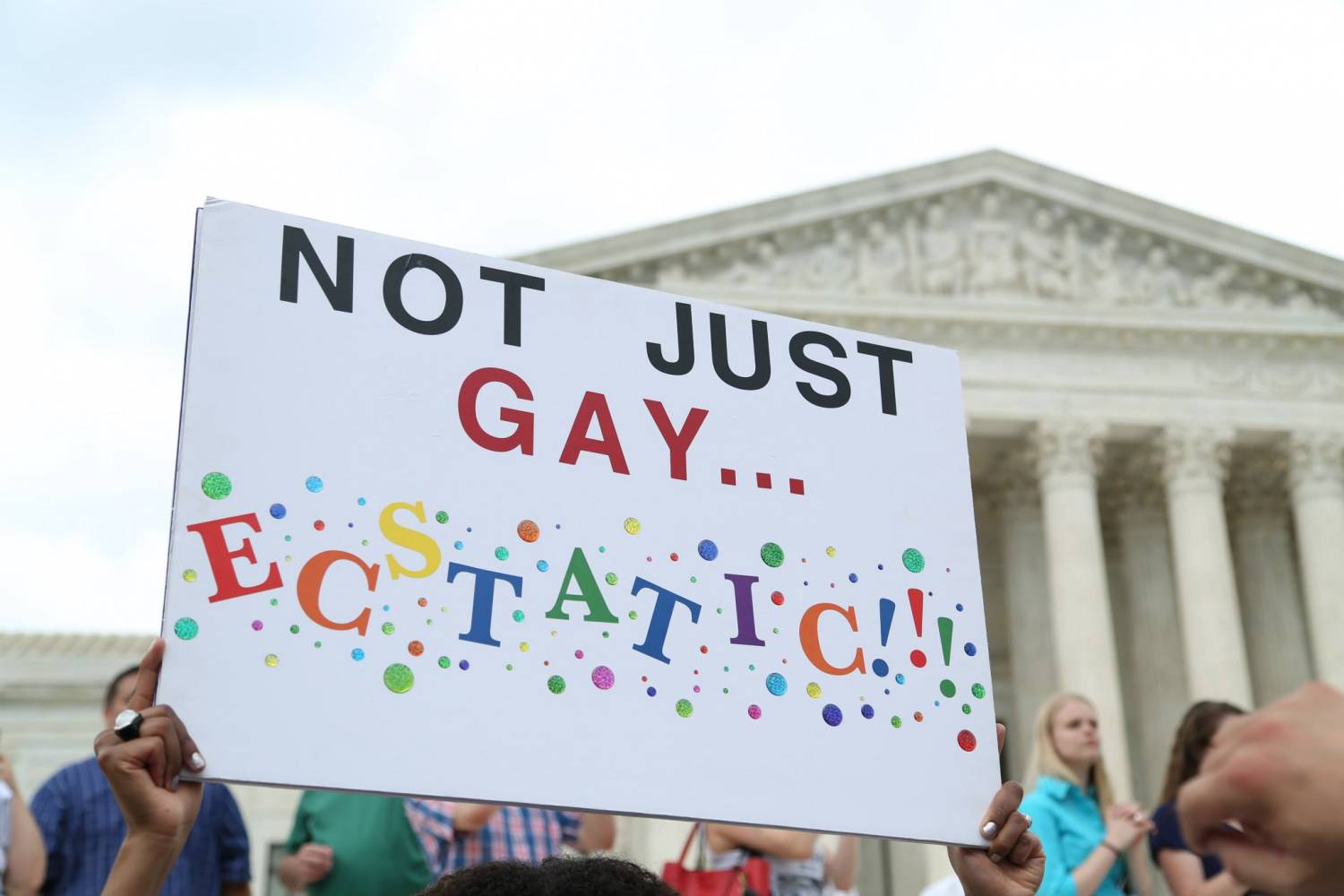In the middle of the last decade, a few things happened that caused us to elevate to a new level our work on behalf of transgender employees.
In August of 2004, the Cincinnati-based Sixth Circuit issued its decision in Smith v. Salem, becoming the first federal appellate court to hold that a transgender employee could sue for sex discrimination under Title VII of the Civil Rights Act.
The following year, Cole Thaler joined Lambda Legal as our first Transgender Rights Attorney, located in Atlanta, where he was supervised by a guy (one guess who) who had just become the organization’s point person on workplace issues (if you guessed it was me, you were right).
At that moment, court victories seemed both crucial and attainable for transgender workers, who lagged well behind their lesbian, gay, and bisexual counterparts in state statutory protections. Of the fourteen states with sexual orientation workplace protections at the end of 2004, only four had explicit gender identity protections. Moreover, it wouldn’t be until a couple of years later that transgender workers were even part of the effort to get Congress to pass explicit federal protections for the LGB(T) community.
As an aside: By the end of 2009, there were 21 states with sexual orientation protections, 12 of which also had gender identity protections. Fast forward to now – late 2019 – and there are 22 states with sexual orientation protections, 21 of which also have gender identity protections. The growth of the overall LGBT state statutory protection pie has flatlined with the addition of only one state in the past ten years (2010-2019), contrasted with the addition of seven states in the five years before that (2005-2009). But at least now, transgender workers enjoy an almost equally delicious portion of said pie.
But back to Smith v. Salem.
That case gave us both legal comfort and a challenge to expand its influence. As far as winning precedents, nobody was in a hurry to get to the Supreme Court (with a fairly nonexistent track record on issues specific to the transgender community), so getting a few more pro-coverage circuits on a leisurely timetable would be fine. And since blatant and openly-admitted anti-trans discrimination was running rampant, some good stories told by compelling plaintiffs seemed a wise course.
For Lambda Legal, that translated into the cases of Issa Lopez and Vandy Beth Glenn, who lost their jobs the moment their employers confirmed their identity as transwomen.
Admittedly, some were nervous that we were in litigation in the Southern District of Texas and the Northern District of Georgia – both with questionable track records of rulings – but that ended up very well. Combined, we got three fabulous published opinions from those courts.
But then there was the prospect of an appeal. Issa’s case settled and never went to the Fifth Circuit. But Glenn v. Brumby did go on appeal, to an oral argument that was any lawyer’s worst nightmare. (Fortunately not this lawyer, who conveniently witnessed the last question to the other side, which began, “One more question, counsel, and we’ll put you out of your misery.”) Five days after the argument (you read that correctly, and that includes the two non-business weekend days), a wonderful published opinion was issued.
There was no way I was going to top that, and I subscribe to an amended version of Mika’s mantra: “Know Your Added Value.” Most federal circuits had no unfavorable case law in the area and would likely follow the better-reasoned decisions in Glenn and Smith v. Salem, and not the ancient embarrassments that preceded them.
So, like George Costanza, I moved on and shifted focus to getting favorable case law for Title VII’s coverage of sexual orientation discrimination. Let’s just say that the caselaw landscape in 2012 showed a lot of “growth potential.” In the then-almost-50-years of Title VII’s existence, there were three favorable decisions, all from district courts.
There was also a dire need to change the narrative, as virtually every federal circuit had said that Title VII didn’t cover sexual orientation discrimination. They said it in cases where it mattered, where it didn’t matter, and when it wasn’t even argued – and the lower courts were almost certain to continue throwing out the vast majority of Title VII sexual orientation discrimination claims until the landscape changed.
In addition to needing a blueprint for success, the judicial effort came with a sense of “preferred urgency.”
In June of 2013, the U.S. Supreme Court issued its decision in Edie Windsor’s case, striking down DOMA. Of the four oldest justices, born in the summer of 1938 or before, three voted in our favor, one against. It would be quite difficult to get a viable case to a Supreme Court that included the five-justice Windsor majority. Thus, the arguments should appeal to a Court that would follow the conservative path of honoring the words of the statute that actually is the law, and ignore the words of proposed amendments that never became law:
If Mary in management and Mark in marketing both take a lovely bride, and you fire Mary but not Mark, is it sexual orientation discrimination, or sex discrimination? Just like Shimmer Dessert Topping: it is both!
The good news is that, right out of the gate, we raised the favorable decision tally from three to five, via submitting amicus briefs in two district court cases: one in Washington, D.C., the other in Washington State. The not-so-good news is that an appellate win seemed as remote as ever. When courts grant motions to dismiss, an appeal can be taken immediately. But when they deny them, the lengthy district court litigation process begins, and there is usually a settlement.
That’s what happened in the two Washington cases, and indeed is what also happened in the three pre-2013 cases. And a district court decision is binding on…nobody. Not the other judges in that district or even the judge that wrote it, should they change their mind when the issue next surfaces.
Thus began a prioritizing of cases that had been dismissed by district courts and could be appealed immediately. This strategy was quite effective in getting a number of appellate rulings regarding Title VII coverage, which resulted in the circuit split that has prompted the Supreme Court to decide the issue once and for all.





